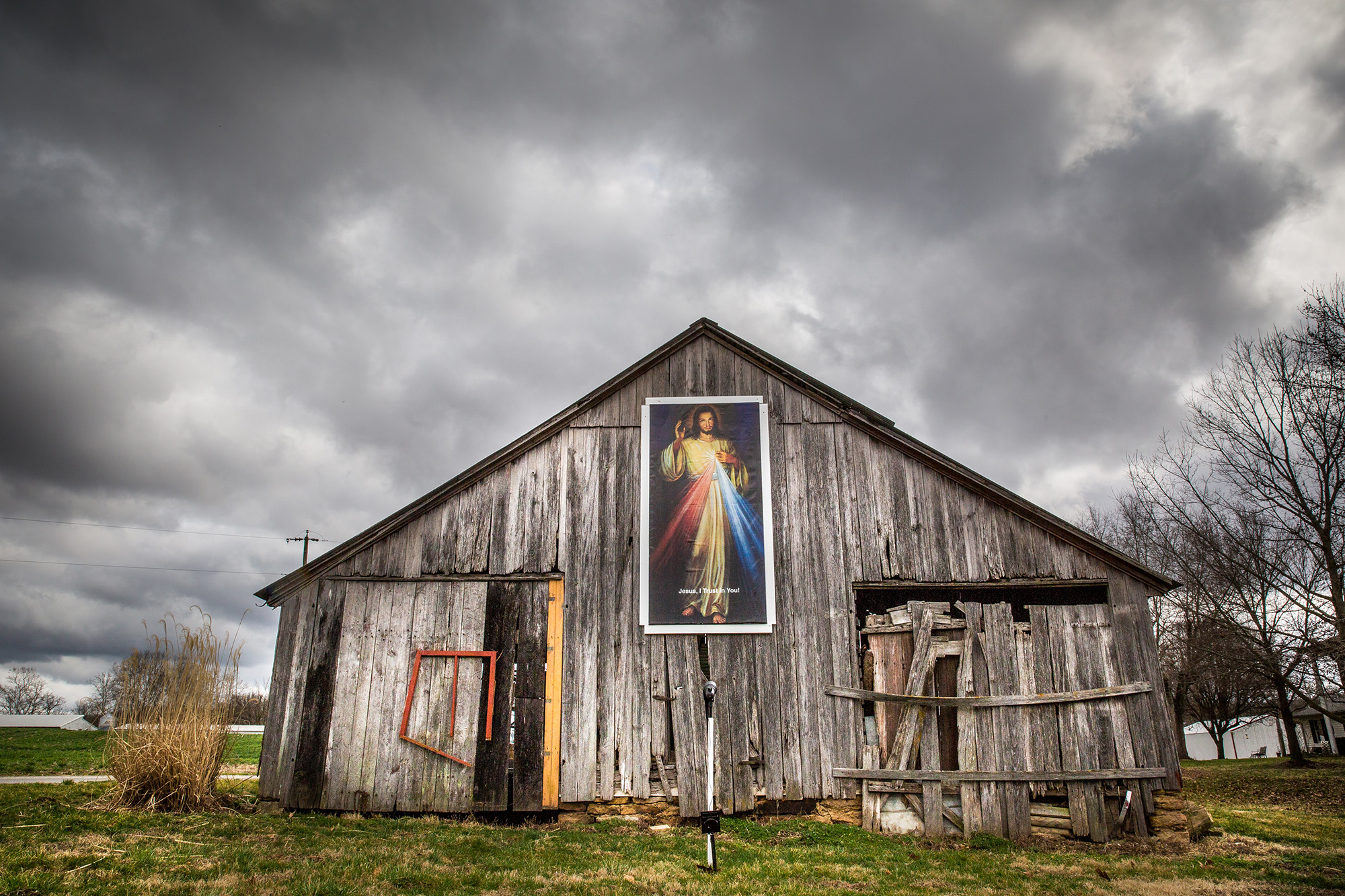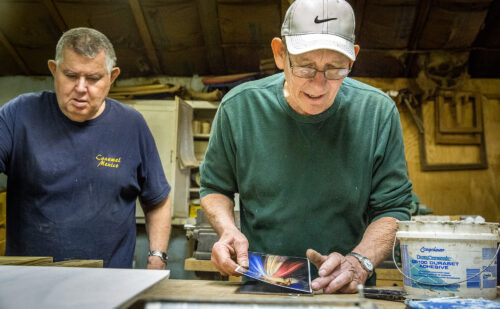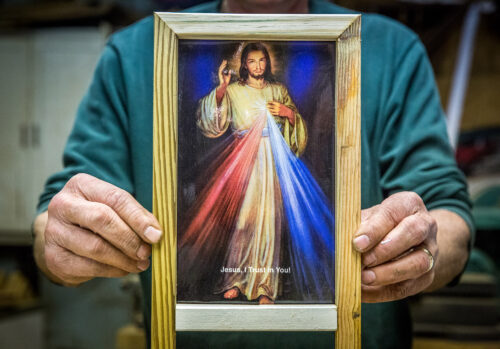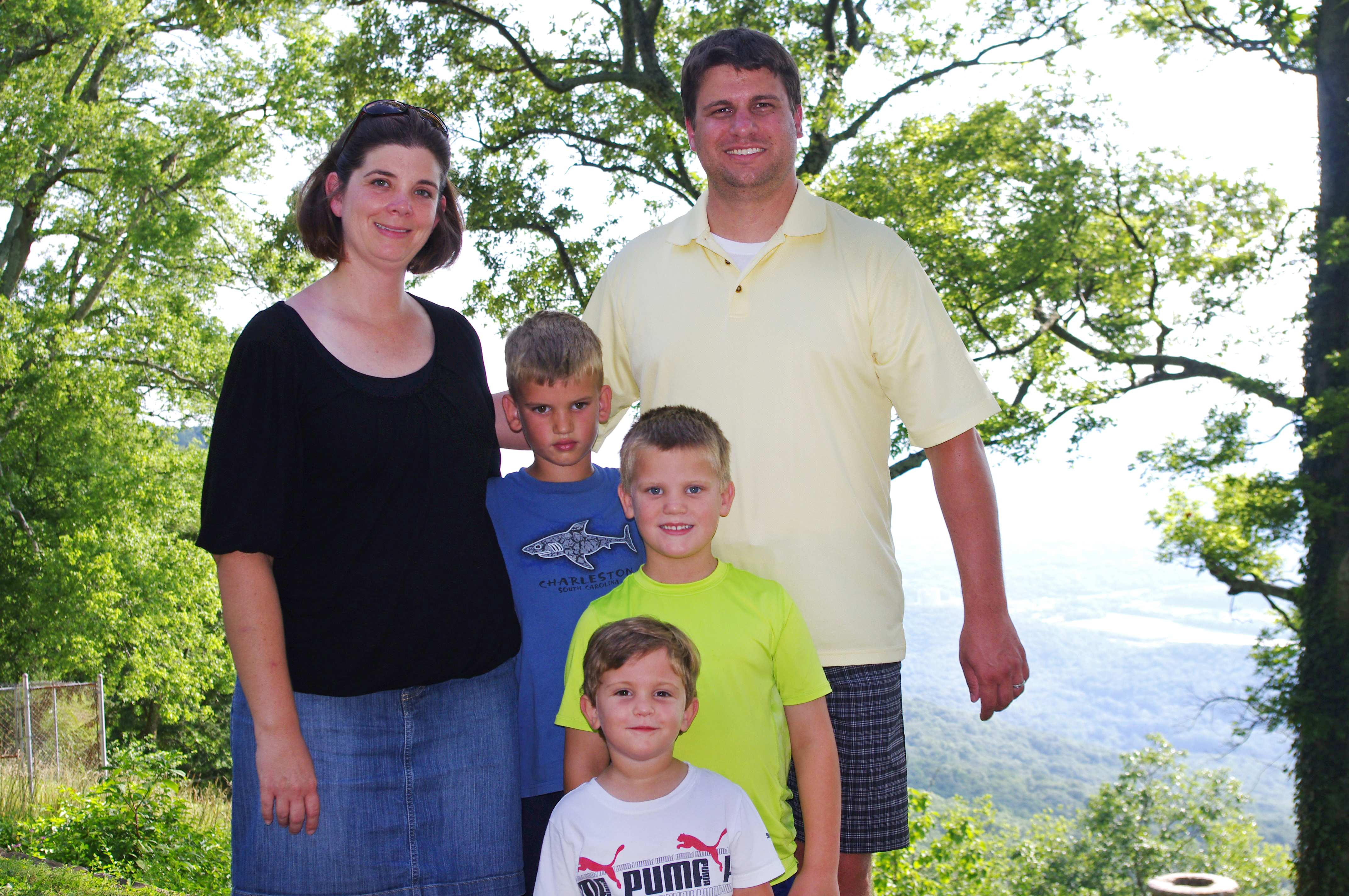Workers for Mercy at St. Francis Borgia lead grassroots effort to spread message of Jesus’ Divine Mercy

Workers for Mercy at St. Francis Borgia lead grassroots effort to spread message of Jesus’ Divine Mercy
The email came via a friend:
“This week has been a very rough week, trying to get back into the groove of third shift all over again and dealing with the swelling of my ankle. On my drive into work, I have cried every single night. But there is a sign of JESUS … every time I see it, it gives me a glimpse of PEACE!!!!”
The note referenced a 7-by-10-foot image of Divine Mercy perched along Highway 100 in Washington, Mo. The message struck a chord with a group of parishioners at St. Francis Borgia who have been spreading the image of Jesus’ Divine Mercy through Franklin County and beyond. It was just the sign they needed.
“How many more go by without us even knowing?” Ken Obermark asked.
About six months ago, the Borgia group, who call themselves “Workers for Mercy,” began sharing the image of Jesus as the Divine Mercy. It started with several signs along the highways. A few were placed on barns. It’s since grown to dozens of signs across the area. The hope is that people will see the image and know that God loves them and that His mercy is greater than their sins.
The grassroots effort has grown into something they never imagined possible, said Mary Armistead.
History of the devotion

The feast of Divine Mercy, or Divine Mercy Sunday, ends the Easter Octave and celebrates the fullness of Christ’s Resurrection. This year, the feast will be celebrated on April 3.
The feast was initiated by St. Maria Faustina Kowalska, a young Polish nun who kept a diary in the 1930s of Christ’s private revelations, in which He shared a message of mercy.
St. Faustina saw her first vision of Jesus on Feb. 22, 1931. She wrote about the encounter in her diary:
“In the evening, when I was in my cell, I saw the Lord Jesus clothed in a white garment. One hand (was) raised in the gesture of blessing, the other was touching the garment at the breast. From beneath the garment, slightly drawn aside at the breast, there were emanating two large rays, one red, the other pale. In silence, I kept my gaze fixed on the Lord; my soul was struck with awe, but also with great joy” (Diary of St. Faustina, 47).
Jesus instructed St. Faustina to have an image painted to represent the vision and to write below it, “Jesus, I trust in you!” His desire was to have the image venerated and spread throughout the world. St. Faustina also wrote in her diary that Jesus encourages the faithful to trust in His mercy and turn to Him for that mercy.
“My daughter, tell the whole world about My inconceivable mercy. I desire that the Feast of Mercy be a refuge and shelter for all souls, and especially for poor sinners. On that day the very depths of My tender mercy are open. I pour out a whole ocean of graces upon those souls who approach the fount of My mercy.” (Diary of St. Faustina, 699).
St. Faustina died of tuberculosis in 1938 at age 33. St. Pope John Paul II canonized her in 2000. That same year, the pope declared Divine Mercy Sunday, the Sunday after Easter, a worldwide feast day.
Spreading the message

Over the past several years, the group had been meeting at the parish to discuss the writings of Father Michael Gaitley, a priest of the Marians of the Immaculate Conception. The congregation is known for its work promoting the message of Divine Mercy. Last year, the group read Father Gaitley’s book, “You Did it to Me: A Practical Guide to Mercy in Action.”
“We started to think, ‘Is God asking us to do something here?’” Armistead said. They sent Divine Mercy materials to parishes in the Washington Deanery.
But the workers didn’t stop there. Obermark received a small donation from a friend who wanted to support the group’s small efforts to spread the Divine Mercy message. So he went to a sign printer in town and had a few prints made. They were 8 by 10 feet — large enough to be seen from the side of the highway.
As the images went up, news started to spread through town. Then the group turned to yard signs. Obermark, a retired painter and woodworking hobbyist, started making wooden frames for the 2-by-3-foot signs. To help recoup the cost of materials, the group has sold baked goods and barbecue pork steaks at the parish. Requests started coming in for more yard signs, and nearly 40 have been distributed so far. The group also made a 7.5-inch by 21.5-inch version to be placed on graves at the cemetery.
The message of Jesus’ Divine Mercy has spread far and wide. Jim and Judy Derner arranged to have one of the images placed in the serenity room — a place where dying residents spend their final moments — at a secular nursing facility in town. The devotion, including praying the Divine Mercy chaplet (which uses the rosary, but includes prayers specific to the Divine Mercy devotion) is a go-to for those who are sick and dying. But Lucille Piontek said the image and the devotion is needed for the living, too.
“We certainly need it now with our culture of death,” said Piontek, who has a 4-foot-by-9-foot image on the side of her barn at her family’s pig farm just west of Washington. “No matter how bad things might seem, you can be forgiven. God will be merciful.”






